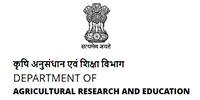Child Development
Colostrums is the first fluid secreted as mother’s milk after delivery and continues for two to four days. It is little thick and yellowish in colour. It is most important God gift for new born baby which creates immunity power in child. It cannot be obtained from any other source. It contains a good amount of vitamin ‘A’, ‘K’ and other protective nutrients which protect the baby from infections and allergies. In addition, it acts as a laxative and cleans the stomach of the new born. Therefore, the child should not be deprived from colostrums.
Breast feeding should be started as soon as possible to provide the most required colostrums to the new born baby. It is ideal to initiate feeding the baby after half an hour in normal delivery and after four hours in cesarean case. No other feed than mother’s milk is advisory for the baby. It should be offered as soon as the baby is able to suck and mother is well to suckle. Even in case of twins or cesarean section or infections or medications, those mothers can breast feed successfully.
The babies should be fed within three hours interval starting with three minutes on each breast and gradually increasing the time. During night time 6 to 8 hours interval is recommended.
- In case of adequate breast milk
- The baby takes sound sleep for 2 to 4 hours after each feed
- Urination occurs at least 6 times within 24 hours with clear or light yellow urine and
- There is good gain in weight by the baby.
- Mother‘s tiredness
- Lack of confidence and
- Lack of anxiety
- The mother should feel relaxed, confident and free from anxiety during breast feeding.
- The feeding position should be corrected
- Complete emptying of the breast is important as it helps in facilitating the flow of milk
- She must take balanced diet for good milk secretion.
- The mother should firmly hold baby’s head with one arm and turn the baby towards her in lap.
- The breast should be lifted in hand and put in baby’s mouth as much as possible – not just the nipple.
- The lips of the baby should touch the nipple and the mother should wait till the mouth is wide open. Then direct the baby’s lower lip towards the base of the areola and move the baby well on to the breast.
- Mother should see that much of the areola is not visible, baby takes long deep suckle, baby is relaxed and mother does not feel any nipple pain.
The farm woman should grow dark green vegetables in her nutrition garden in a sunny location which receives 6 to 8 hours sunlight per day. The spinach leaves, amaranths leaves, colocasia leaves, knoll-khol leaves, etc. as darker green vegetables should be provided to her children as it contains more iron.
Weaning is the process by which the infant’s diet pattern is gradually changed from liquid foods like breast milk and other substitute milk preparation to cooked solid foods. This process can be started from the age of 3-4 months. The introduction of solid foods depends upon the appetite of the infant, its digestion and absence of a tendency towards food allergies. Weaning helps the child to get introduced with different tastes with a wider variety of food items.
Easily digestible starchy foods can be given as the baby develops livingness to accept by 6 months. The baby may be given boiled and smashed potatoes, carrots, pumpkin, papaya, plantain, sweet potato, etc. with little addition of sugar/jiggery and salt and lemon juice. Gruels and puddings from cereals with or without legumes can be gradually introduced.
The recommended allowances are:
- Calories : 900 – 1000
- Protein :17gm
- Calcium : 0.4 to 0.5gm
- Iron : 15mg
- The diet should meet the nutritional requirements of the child since he is growing
- New foods should be introduced gradually, one at a time and allow him to be familiar with the item before introducing another one
- The first solid should be very thin consistency and fewer amounts
- The baby should not be forced for any food which he is unwilling
- Variety in the choice of foods is very much essential
- Food should be seasoned only with salt but not any spices
- When the baby becomes able to chew, finely chopped fruits and vegetables ay be added to the diet gradually
It is necessary to train the adolescents to eat properly at regular meal times, in a relaxed manner. They should have wholesome snacks at regular intervals. These snacks should preferably be made from whole grains, dals for example, from whole wheat, puffed rice, ground nuts, sesame seeds, chana. Sweets can be had occasionally.
Mal nutrition at the adolescent age can impair body function, working ability, affect physical growth and skeletal development and interfere with school performance. Traits such as inertia and apathy resulting from under nutrition tend to persist even in later life.
- Back to previous page
- |
-
Page last updated date:18-04-2024 10:23 AM
 भारत सरकार | Government of India
भारत सरकार | Government of India









